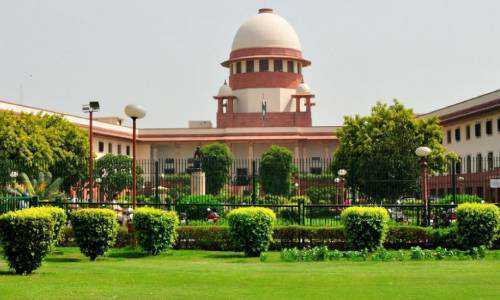
The Apex Court upheld the decision of the NCLAT and concluded that the requisite percentage had not approved the resolution plans of IIL and KSPIPL of the voting share of the financial creditors and in the absence of any alternative resolution plan within the statutory period of 270 days, the liquidation process of the two corporate debtors should be initiated under section 33 of the IBC.
In the instant case titled K. Sashidhar v. Indian Overseas Bank & Ors. four issues were raised before the Supreme Court for clarification:
What falls within the ambit of the NCLT and whether decisions taken by the Committee of Creditors are within the scope of judicial review?
Whether the Committee of Creditors should be compelled to cite reasons for rejecting a resolution plan
Whether the voting share should consider the creditors who have abstained from voting?
The extent of retrospective or prospective effect of the amendments made during the pendency of the case.
With regard to the first issue, the Supreme Court observed that the NCLT's authority is limited and its area of inspection is limited. Financial creditors are responsible for concerns such as payment priority, effective management of the troubled company, and the implementation and oversight of the resolution plan. These can only be evaluated and analysed with commercial wisdom, which is a talent that judicial power lacks. As a result, the Supreme Court established and recognised the judicial and appellate authorities' control over insolvency matters. However, if the rejected resolution plan is falling within the grounds mentioned in section 30(2) of the code and includes any decision on the applicability of the resolution applicant (as specified in section 29A) of the case, it would be subject to judicial review.
With regard to the second issue, it was held that it was comprehensible that the Committee, with all its commercial wisdom, are not mandated to cite reasons for rejecting a resolution plan.
With regard to the third issue, it was held that in July 2018, an amendment was passed that reduced the voting share threshold from 75% to 66%. The Supreme Court stated that the modification is prospective in its adoption because it is a clarification and a new standard. Furthermore, the Insolvency and Bankruptcy Code (Amendment) Act, 2017, which took effect on November 23, 2017, added the phrase "after assessing its feasibility and viability, as well as such other requirements.
For the fourth issue, The Supreme court held implementing the same with a retrospective approach would hinder all prior decisions taken by the Committee in analysing a resolution plan’s viability. Every pending case in such matters would be subject to approval if a retrospective approach is taken into account, defeating the code’s purpose.
The court categorically held that:
“ Besides, the commercial wisdom of the CoC has been given paramount status without any judicial intervention for ensuring completion of the stated processes within the timelines prescribed by the I&B Code. There is an intrinsic assumption that financial creditors are fully informed about the viability of the corporate debtor and feasibility of the proposed resolution plan”.
The Supreme Court upheld the appellate authority’s decision (NCLAT) and had ordered the initiation of the liquidation process for both the corporate debtors.

